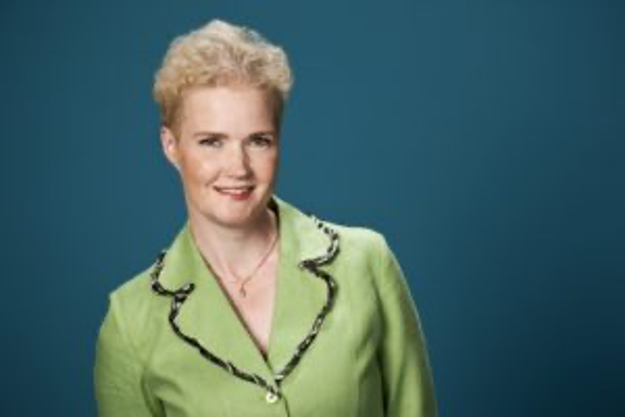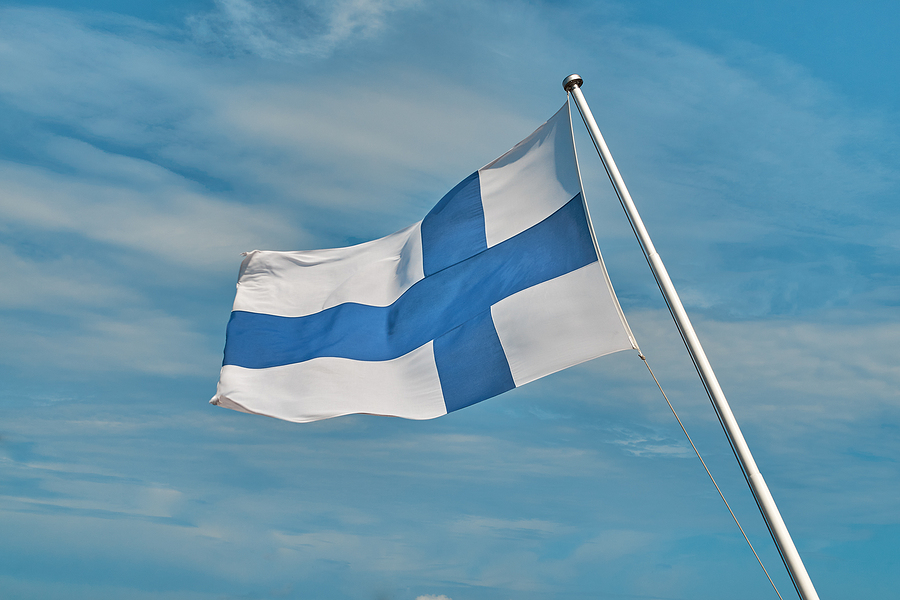During my visit to Euronaval on October 20, 2002, I had a chance to talk with Tuija Karanko, the Secretary General of the Association of Finnish Aerospace and Defence Companies. I will highlight what the Association does and focuses upon in the appendix to the interview, where I will republish an article by Ms. Karanko focusing on that question.
What I focused with her was her perspective on Finland come into NATO and how that impacted both Finland and the Alliance. Finland is one of the most serious states about defense in Europe; it did not abandon direct defense for the away game in the Middle East, nor did it abandon conscription or comprehensive security.
Indeed, Finland provides leadership by example for much of the rest of the Alliance including the United States. Indeed, coming from Australia where I spent the month of September and discussed throughout the month the challenge of focusing on the direct defense of Australia, many of the capabilities which Finland has built are relevant for shaping Australia’s way ahead, most notably comprehensive security.
Our discussion indeed started with Ms. Karanko underscoring that Finland was a net contributor to Western defense and security, not a free rider. “We never abandoned the direct defense of Finland in the post-Cold War period. We have a general conscription service and polls regularly indicate that more than 80% of Finns stand ready to defend their country. This is in our DNA as a nation.
“We are a small country of 5.6 million citizens, but we focus on comprehensive security. Our defense approach encompasses the private sector and the ability to mobilize society and our economy in times of crisis. We are very concerned to defend our critical infrastructure as part of our comprehensive security approach.”
We then discussed how Finland and its defense industrial capabilities might intersect with the wider Alliance as Finland became a member. Naturally, now that Finland would be a member of NATO new opportunities to work across European and transatlantic industry were opening up.
She certainly is aware of the challenges to do so but felt that Finland brought several advantages to the table in terms of its defense industrial products and capabilities. Finland builds very robust equipment which can work in harsh conditions. It builds stockpiles of its supplies as well. And designs its equipment to be used by conscripts which means mobilization is facilitated by ease of use of Finnish equipment.
If a society is to mobilize, having only complex high-end equipment will make it difficult to do so. Given the Finnish approach to defense and comprehensive security, Finland has built equipment designed to support a citizen force along with high-end equipment such as the F-35.

She noted: “Our equipment needs to rugged. It needs to be capable of heavy use with a very long lifecycle. We are focused on the training side and the logistical side as a key element for the operation of our forces. A key question guiding or equipment approach: how quickly can you used the equipment and with how few people does using it require?”
She highlighted as well the core competencies of Finland in the communications field and the priority which securing something like a 5G network in a crisis is for the performance of a nation in defending itself. In my own interviews with regard to exercises in Norway as well as operations in Ukraine during the war, the ability to use secure civilian communication networks both for ISR and C2 have been clearly evident.
Appendix: “The Finnish Defence Industry – A Different Approach to Supporting Defence Capabilities,” by Tuija Karanko (European Security and Defence, 14 February 2020).
We Finns are famously modest, but Finland is, according to many international rankings, one of the world’s top countries. We are consistently ranked in the global top 3 in terms of education, innovation, professionalism, security and trustworthiness. For the past two years, Finland has even been named the happiest country in the world!
Finland is a country at the forefront of high-level technologies and digital solutions. This is also the case with Finnish defence industries. Finnish defence and aerospace companies are market leaders in our chosen systems and technologies. These include armoured wheeled vehicles, turreted mortar systems, certain C4ISR/C5, systems, and logistical solutions.
Most Finnish defence companies are privately owned SMEs. They invest significantly in R&D, ca. 15% of their annual turnover. Apart from being acknowledged internationally for producing high-quality, premium products with long life-cycle performance, the companies excel in their methods of utilizing technology and combining so-called civilian technologies into military systems.
The Finnish climate sets demanding requirements for defence technologies. Everything must function reliably in an arctic environment as well as in summer’s heat and autumn rainfalls – and be NATO interoperable. We do excel in snow-how, but most of our products are used in the most demanding environments and crisis management operations around the world. The volume of exports varies annually from 40 to 60 % of companies’ turnover.
Military Security
In Finland, a viable and competitive domestic defence industry is a fundamental element of credible national defence. Finnish technology expertise plays a vital role in the entirety of the defence system providing in-country capabilities (military security of supply).
Finland is also an open market for defence goods. Despite high-level technological expertise and skills, Finland’s own defence industrial capacity is focused on certain specific areas and, therefore, we have chosen to procure many major systems and platforms from abroad.
Military security of supply means that Finland must sustain the necessary industrial and technological competence and autonomy. That includes maintaining and tailoring critical systems so that their independent use can be guaranteed in all conditions.
The Finnish defence industry is integrated into the Finnish defence system in many ways. A major part of army, navy and air force maintenance has been outsourced to domestic companies, which act as close partners to the Defence Forces. The Finnish Defence Partnership model relies on companies carrying out their responsibilities, at all times, to secure military capabilities. We believe that the proper level of military security of supply can only be maintained through competitive defence companies with processes, systems, products, services and partnerships to match.
AFDA
The Association of Defence and Aerospace Industries, AFDA, represents Finnish companies within defence, aerospace and security. AFDA has ca. 130 member companies. It is a member of ASD – AeroSpace and the Defence Industries Association of Europe. AFDA also represents the Finnish companies at EDA, NATO and Nordic fora.
AFDA works in close cooperation with the Finnish Defence Establishment and other security authorities in Finland. AFDA is your point of contact for defence business in Finland. We can support you in networking with Finnish companies and in understanding the business environment in Finland.


